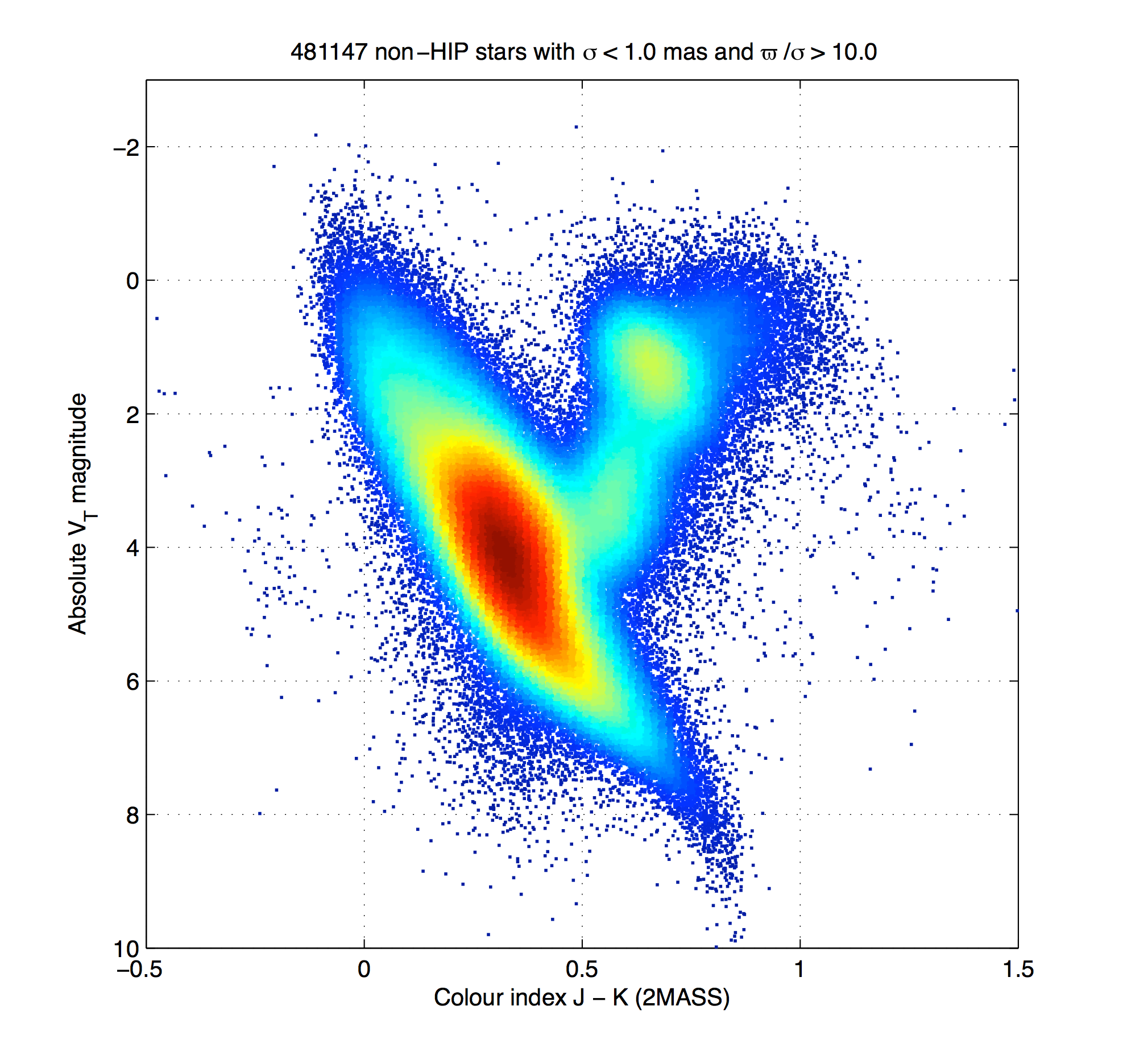news_20150807 - Gaia
Demonstrating Gaia's astrometric potential |
|||
 |
|||
|
Hertzsprung-Russell diagrams based on provisional absolute parallaxes determined by the first Tycho-Gaia Astrometric Solution. Distances for stars with less than 20% (figure above) and 10% (figure below) relative parallax uncertainty (formal standard errors) were used to convert the apparent Tycho-2 magnitudes into the absolute magnitudes on the y-axis. Stars in the Hipparcos catalogue and stars with formal parallax uncertainties larger than 1 milliarcsec were omitted. Awaiting Gaia's own extensive photometric survey, the colour indices J-K on the x-axis were taken from the ground-based 2MASS catalogue. The absolute magnitudes and colour indices have not been corrected for interstellar extinction. |
|||
 |
|||
|
The Hertzsprung-Russell (HR) diagrams presented here were produced as part of a first validation of the astrometric capabilities of the instrument and of the Basic Angle variation measured by the on-board interferometer (Basic Angle Monitor; BAM). Based on less than one year of data from the routine observation phase of Gaia, they give an exciting hint of what the mission will deliver. Much further work is needed to prepare the data releases and to gain full confidence in the resulting astrometric parameters. Nevertheless, the above diagrams demonstrate the overall correctness and readiness of the data processing chain, the quality of the Gaia instrument, and strengthen the confidence that the impact of the Basic Angle variations can be eliminated from the final astrometric results Credits: ESA/Gaia/DPAC/IDT/FL/DPCE/AGIS [Published: 07/08/2015] |
|||
- Removed a total of (8) style text-align:center;
- Removed a total of (3) style text-align:justify;
- Removed a total of (1) border attribute.
- Removed a total of (1) cellpadding attribute.
- Removed a total of (1) cellspacing attribute.








































 Sign in
Sign in
 Science & Technology
Science & Technology